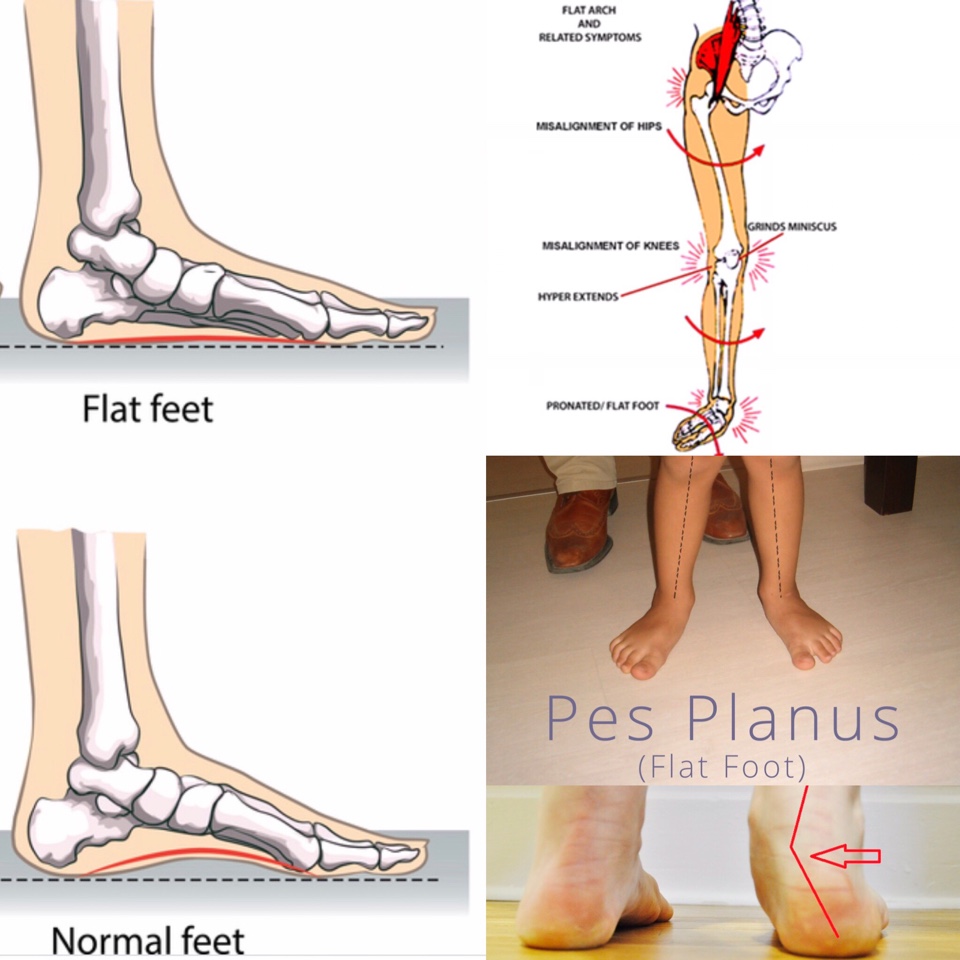Pes Planus

DEFINITION
Pes Planus is a decrease or loss of the medial longitudinal arch of the foot, as the talar head displaces medially and inferiority from the navicular. The hindfoot, (calcaneus), has excessive eversion and the forefoot is abducted.
This causes a stretching and weakening of the spring ligament, short and long plantar ligaments, the plantar aponeurosis, tibialis anterior and posterior and tightening of the peroneals, (muscle imbalance). Other muscles that support this arch include flexor hallucis longus, flexor digitorium longus, and the intrinsic foot muscles.
CAUSES
• hypermobility: congenital, trauma, pregnancy.
• Bad posture: standing with the feet widely apart, (pronate hindfoot).
• Unappropriate footwear: that may allow Pes Planus to worsen, especially with running,walking,hiking.
• Increased weight: obesity, pregnancy.
• Short and tight gastrocs and soleus reduce ankle dorsiflexion. This lead to compensation by the midtarsal joint, which increase pronation.
• Short and tight piriformis leading to external rotation of the hips and excessive collapse of the medial longitudinal arch with toe off.
• Paralysis to musculature of lower leg and foot due to a nerve lesion.
• Congenital bone deformities: such a femoral anteversion which increase internal rotation of the leg, increasing pronation during stance phase.
• Can present unilateral or bilateral. Can be functional or structural
• Adhesion may be palpated in the tendon insertion, plantar fascia, along the leg muscle attachments from possible shin splints.
• Talocrural, and the superior tibiofibular may be hypomobile from compensation.
• Loss of spring in gait.
SOURCES OF PAIN
• Pain in plantar fascia, trigger points in muscles radiating into the foot. Pain from blister and callus formation, or bunion formation.
• Knee pain from patellar tracking dysfunction or IT syndrome.
• Fatigue and aching in feet and legs due to overuse of muscles. Fatigue, pain, aching may worsen with prolonged standing, walking or running.
• Possible spasms in muscles that support medial longitudinal arch with overuse and fatigue.
• Pain from possible Achilles tendonitis, tarsal tunnel syndrome, tibialis posterior tendonitis.
How massage therapy can help people with Pes Planus :
- reduce restrictions;
- reduce hypertonicity;
- reduce pain if it is present;
- reduce trigger points;
- reduce adhesions;
- lengthen peroneal muscles, plantar aponeurosis, tibialis anterior and posterior;
- increase local circulation ;
- improve ROM of the ankle joint and longitudinal medial arch.






